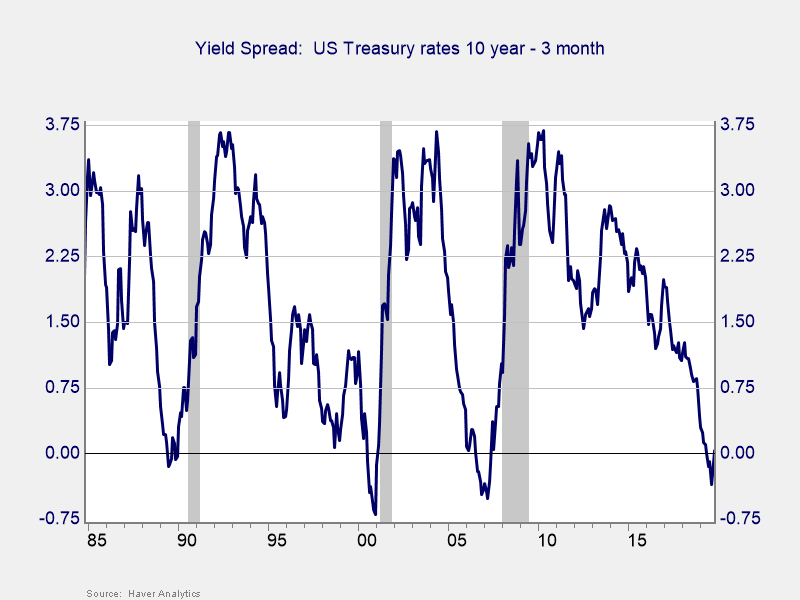At the moment, we’re going to do some “inside-baseball” evaluation across the current adjustments in rates of interest and what they imply. Usually, I attempt to not get too far into the weeds right here on the weblog. However rates of interest and the yield curve have gotten loads of consideration, and the current headlines should not truly all that useful. So, put in your considering caps as a result of we’re going to get a bit technical.
A Yield Curve Refresher
Chances are you’ll recall the inversion of the yield curve a number of months in the past. It generated many headlines as a sign of a pending recession. To refresh, the yield curve is solely the completely different rates of interest the U.S. authorities pays for various time durations. In a standard financial setting, longer time durations have increased charges, which is sensible as extra can go improper. Simply as a 30-year mortgage prices greater than a 10-year one, a 10-year bond ought to have a better rate of interest than one for, say, 3 months. Much more can go improper—inflation, gradual progress, you title it—in 10 years than in 3 months.
That dynamic is in a standard financial setting. Typically, although, traders determine that these 10-year bonds are much less dangerous than 3-month bonds, and the longer-term charges then drop under these for the brief time period. This alteration can occur for a lot of causes. The massive motive is that traders see financial bother forward that can drive down the speed on the 10-year bond. When this occurs, the yield curve is claimed to be inverted (i.e., the other way up) as a result of these longer charges are decrease than the shorter charges.
When traders determine that bother is forward, and the yield curve inverts, they are usually proper. The chart under subtracts 3-month charges from 10-year charges. When it goes under zero, the curve is inverted. As you’ll be able to see, for the previous 30 years, there has certainly been a recession inside a few years after the inversion. This sample is the place the headlines come from, and they’re usually correct. We have to concentrate.

Just lately, nonetheless, the yield curve has un-inverted—which is to say that short-term charges are actually under long-term charges. And that’s the place we have to take a more in-depth look.
What Is the Un-Inversion Signaling?
On the floor, the truth that the yield curve is now regular means that the bond markets are extra optimistic concerning the future, which ought to imply the danger of a recession has declined. A lot of the current protection has urged this situation, however it isn’t the case.
From a theoretical perspective, the bond markets are nonetheless pricing in that recession, however now they’re additionally trying ahead to the restoration. If you happen to look once more on the chart above, simply because the preliminary inversion led the recession by a 12 months or two, the un-inversion preceded the tip of the recession by about the identical quantity. The un-inversion does certainly sign an financial restoration—but it surely doesn’t imply we received’t need to get by a recession first.
In actual fact, when the yield curve un-inverts, it’s signaling that the recession is nearer (inside one 12 months primarily based on the previous three recessions). Whereas the inversion says bother is coming within the medium time period, the un-inversion says bother is coming inside a 12 months. Once more, this concept is in line with the signaling from the bond markets, as recessions usually final a 12 months or much less. The current un-inversion, due to this fact, is a sign {that a} recession could also be nearer than we expect, not a sign we’re within the clear.
Countdown to Recession?
A recession within the subsequent 12 months shouldn’t be assured, in fact. You can also make a very good case that we received’t get a recession till the unfold widens to 75 bps, which is what we have now seen prior to now. It might take a very good whereas to get to that time. You may as well make a very good case that with charges as little as they’re, the yield curve is solely a much less correct indicator, and that could be proper, too.
If you happen to have a look at the previous 30 years, nonetheless, you need to no less than take into account the likelihood that the countdown has began. And that’s one thing we’d like to concentrate on.
Editor’s Notice: The authentic model of this text appeared on the Unbiased Market Observer.

